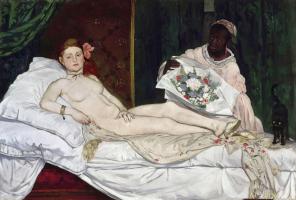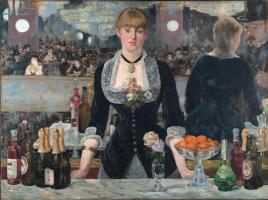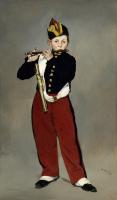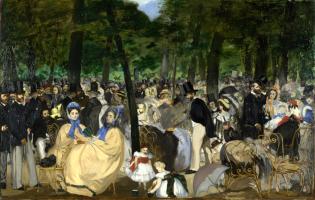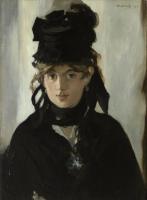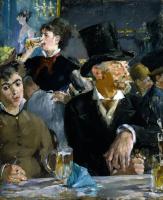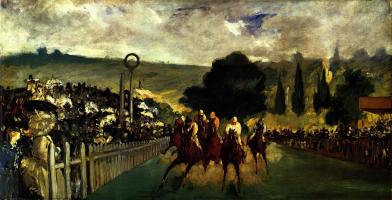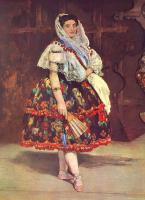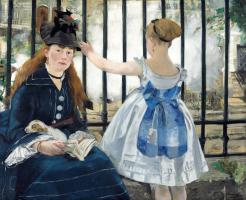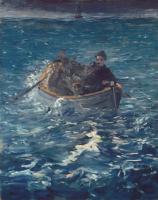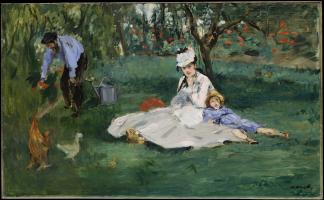Édouard Manet
Manet came from a comfortable middle-class Parisian background — his father was an official in the Ministry of Justice — and his decision to be a painter met with strenuous family opposition. He studied under Couture, a much admired artist of the day, who gave him a thorough grounding in technique; but his travels studying European art, and the experience he gained from copying Old Masters in the Louvre were equally valuable. He developed a brilliant technique, based on a limited palette and the use of contrasting light and shade, and he painted directly on to the canvas, which gives his work great zest and vitality.
He longed for public recognition, but his unconventional ideas led to him being labelled a rebel, and his paintings were frequently refused by the official Salons. He joined the Impressionist group soon after it was formed, and became one of its key figures, although, fearing more disparagement from the critics, he refused to take part in its exhibitions.
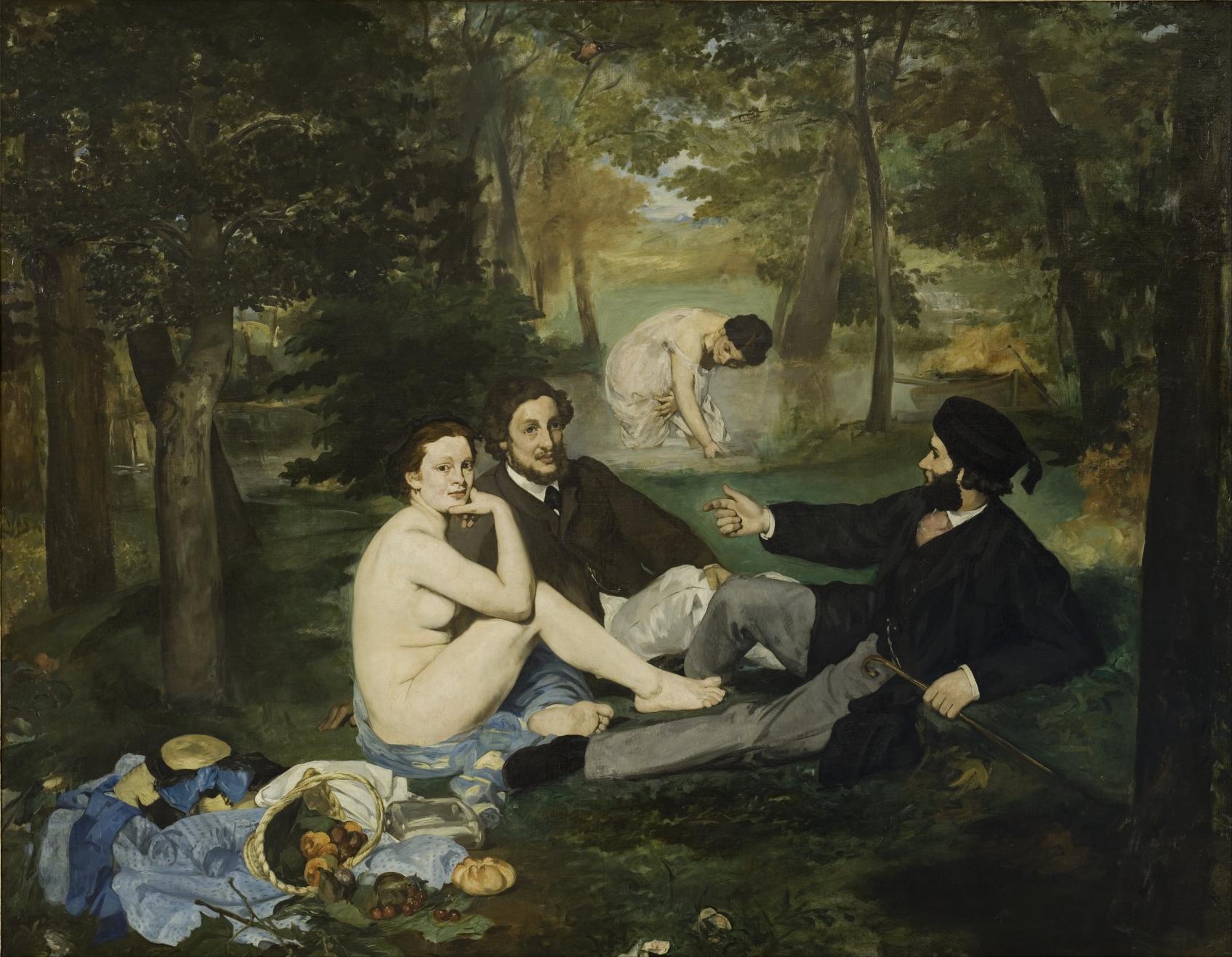 The painting that caused one of the greatest upheavals of the time was an early
work — Le déjeuner sur l’herbe — which preceded the Impressionists
by nearly a decade. When it was first exhibited it caused a scandal, and the
Emperor himself called it ‘an affront to modesty’. It was revolutionary not
because the woman is naked, but because she is shown with two men who are fully
clothed in contemporary dress, and they are engaged in an ordinary conversation
at an ordinary picnic. The nude was no longer protected in the traditional way
by the scene being set in some mythical place, and illustrating an ancient
legend. Even the picnic itself consists of ordinary everyday food — not
exotic sweetmeats, but the bread rolls that were part of the staple diet of
every Parisian. Manet wanted to be free to paint any subject that appealed to
him, without preserving conventions, and this attitude was hard for his
contemporaries to accept.
The painting that caused one of the greatest upheavals of the time was an early
work — Le déjeuner sur l’herbe — which preceded the Impressionists
by nearly a decade. When it was first exhibited it caused a scandal, and the
Emperor himself called it ‘an affront to modesty’. It was revolutionary not
because the woman is naked, but because she is shown with two men who are fully
clothed in contemporary dress, and they are engaged in an ordinary conversation
at an ordinary picnic. The nude was no longer protected in the traditional way
by the scene being set in some mythical place, and illustrating an ancient
legend. Even the picnic itself consists of ordinary everyday food — not
exotic sweetmeats, but the bread rolls that were part of the staple diet of
every Parisian. Manet wanted to be free to paint any subject that appealed to
him, without preserving conventions, and this attitude was hard for his
contemporaries to accept.
The people represented in Le déjeuner sur l’Herbe were well known to him: the woman in the foreground is Victorine Meurand, one of his favourite models, and the men are his brother Eugene (who later married one of the Impressionist group, Berthe Morisot) and a young Dutch sculptor Leon Koella-Leenhoff. He has shown them in a wooded country setting, with a woman bathing in a pool in the background, and a soft light filtering through the trees, highlighting the pale flesh against the rich deep greens of the grass. The flesh tones are contrasted so dramatically with their dark background as to seem almost luminous.
 Music in the Tuileries is a statement of Manet’s desire to paint in an
entirely new way. It is chaotic, dynamic and most importantly, it is modern.
The figures do not appear to be posed or static, they are living, breathing
people who inhabit urban Paris.
Music in the Tuileries is a statement of Manet’s desire to paint in an
entirely new way. It is chaotic, dynamic and most importantly, it is modern.
The figures do not appear to be posed or static, they are living, breathing
people who inhabit urban Paris.
The irony of this piece is that despite its title, no music is seen being played.
There are no musicians, no instruments, and no obvious performances taking place. In this way, the piece contrasts with Manet’s earlier works that feature music and musicians such as Spanish Guitarist, Street Singer and Old Musician.


